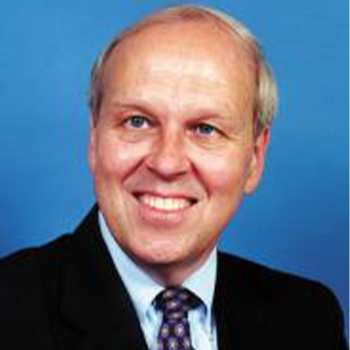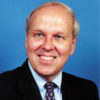Back to series



William Wilberforce and His Circle of Friends
Click here to open Print- Friendly PDF
“... unless God has raised you up for this
very thing, you will be worn out by the
opposition of men and devils. But if God be
for you, who can be against you?”
So wrote the aging John Wesley, as a word of encouragement, to William Wilberforce (1759-1833), the Member of Parliament who led the campaign to abolish the slave trade in the latter part of the eighteenth century and first part of the nineteenth century. The cause of abolition is probably the activity for which Wilberforce is best known in history. However, it marks only a central theme to approximately forty years of public life and activity.
Wilberforce’s life was filled with one moral and religious project after another. It was a life of unrelenting activity that included tireless organizing, research, persuasion, confrontation, persistence and pressure upon the British system. In addition to his abolition work, he was consistently involved in church work that included the Church Missionary Society and the sending of missionaries to India and Africa, the British and Foreign Bible Society, the Proclamation Society Against Vice and Immorality, the School Society, the Sunday School Society, the Bettering Society, the Vice Society and others. His public philanthropic efforts were many, including relieving the suffering of the manufacturing poor, and French refugees and foreigners in distress. He made major financial contributions to at least seventy such societies, many of them bearing his name as an officer. History records Wilberforce as having been active in numerous reform movements, which included reform in hospital care, fever institutions, asylums, infirmaries, refugees and penitentiaries. He supported religious publications and education, especially the schools of Hannah More, a close friend and leading reformer of British education.
Much has been written of late about Mr. Wilberforce and his accomplishments. Indeed, he was a great reformer who delighted in people, a strong family man, deeply disciplined in his dedication to Jesus Christ, who overcame illnesses to accomplish what he did. Yet something is missing in the accolades that he now receives. This missing piece, is that he was indeed gifted and deserving of admiration, but he could not have done what he did without his circle of friends. Most of the books and articles written about him throughout history often overlook this critical factor. Wilberforce was part of a unique circle of friends that empowered him, along with Providence, to accomplish what he did. One only needs to read the 400+ letters to and from Wilberforce located in the Duke University Library to begin grasping this insight. For example, it was Wilberforce’s circle of friends who shared his deep faith in Christ, particularly Hannah More, who encouraged him to write a “manifesto” of what had taken place in his life and what he regarded as the essentials of the faith. The lengthy title was A Practical View of the Prevailing Religious System of Professed Christians in the Higher and Middle Classes in This Country Contrasted with Real Christianity. The book was an immediate success without precedent, with sales of 7,500 copies in the first six months. By 1826, fifteen editions had been printed in Britain and 25 in the United States. Translations of the work were printed in French, Dutch, Italian, Spanish and German. This publication served as an excellent means of expressing conviction in a society whose courtesies of life and forms of society prevented much verbal expression of religious sentiment.
Throughout history groups of men and women have banded together for the purpose of promoting what they believed to be critical causes. With the defeat of his motion for the abolition in 1789, Wilberforce and his closest friend, Henry Thornton, called together such a group around themselves. The common bond that held this “Clapham Sect” together was the desire to apply their faith in Jesus Christ to personal, social, political, national and international matters. The group made no claim to be theologians, yet they were people who regarded prayer and Bible study as serious matters. The Clapham group believed that they were representatives of God’s kingdom on earth and the faithful stewards of all God had given them.
Together, this Clapham fellowship sought to make the British Empire an instrument of social and moral welfare to all people. Throughout their time together, they remained remarkably committed to these goals. The labels “Clapham Sect” and the “Saints” were given to them by others, the latter by members of Parliament. No indication of any desire to give themselves a name was reflected in the correspondence and literature of members of the group. The term “Clapham Sect” was not used until later, when the phrase was coined in an 1844 essay by Sir James Stephen. The name originated from the London suburb, Clapham, where many of the group members chose to live.
The group had many distinctive characteristics. It had no exclusive membership requirements. They gathered together by virtue of their faith in Jesus Christ, love for one another, and out of concern for a variety of moral, social and religious causes. The spirit of inclusiveness caused Hannah More to remark that those who worked together on the slavery issue were like “Noah’s ark, full of beasts, clean and unclean.” The Clapham group’s acquaintances were many in number, representing a broad cross-section of Britain’s leadership. Wilberforce and his friends’ organizational skills and steadfast purpose carried the Saints through many difficulties, but the fact that the Clapham fellowship “knew everyone” was very important to the movement’s success. Indeed, the “Saints” loved to entertain and socialize. While Wilberforce and Thornton lived at Palace Yard in London, they kept a virtual “open house” for members of Parliament. A unique feature of the “Clapham Sect” was the desire to live with one another, or in proximity to each other. Always welcome in each other’s homes, the Saints were known to be “good family people.” In spite of the Clapham Sect’s many crusades, life in many ways was centered around their homes, with family and friendships as priorities. This was undoubtedly one of the group’s important sources of vitality. The village of Clapham, the gathering place, was a prosperous suburb located five miles from the heart of London. The building of a Christ-centered community at Clapham was the vision of Henry Thornton, a banker, philanthropist and Member of Parliament. He bought Battersea Rise House in 1790. This was eventually to become the “headquarters” of the Clapham fellowship. Wilberforce lived with Thornton until Wilberforce’s marriage to Barbara Spooner. He and Barbara then moved into Bloomfield, one of two houses built on the grounds. The other was leased to Charles Grant, another regular member of the Clapham group.
What had begun as an informal group of friends drawn together by common concerns eventually took definite shape. To this fellowship not only came Parliamentarians William Wilberforce and Henry Thornton, but the aforementioned Charles Grant and Edward Elliot, brother-in-law to William Pitt. Elliot moved to Clapham with the desire for Wilberforce’s spiritual guidance. William Smith, the Unitarian and Radical Whig, lived in Clapham and was ultimately drawn into the circle. Abolitionist Granville Sharp was also a resident. James Stephen, Master-in-Chancery and Member of Parliament from Tralee, and East Grinstead bought a house across the common. Scholar and former slave-owner Zachary Macaulay and his wife, Selina, settled in Clapham upon his return from governing Sierra Leone. Upon retirement as Governor-General of India, John Shore (Lord Teignmouth) joined them in 1802. Added to this group was the rector of Clapham church, John Venn, and a stream of visitors, including Prime Minister William Pitt, Parliamentarian Thomas Babington, Reverend Thomas Gisborne, Dean Isaac Milner of Queens College, poet and playwright Hanna More, and Reverend Charles Simeon of Cambridge. Perhaps this circle of friends can best be remembered by these characteristics:
- They shared a common commitment to Jesus Christ and a clear sense of calling.
- They were committed to lifelong friendship and mutual submission was the norm.
- Their advocacy was marked by careful research, planning and strategy.
- They worshiped both privately and publicly, gathering twice weekly at the Clapham Church.
- Their friendships were inclusive and focused on the essentials. For example, Wilberforce was a Wesleyan and his closest friend, Henry Thornton, was a Calvinist.
- They made family life a clear priority and delighted in each other’s marriages and children.
- They kept the “long view” on completing projects.
- Abolition of the slave trade took 20 years!
- They made no dichotomy between evangelism and social action. Their magazine, The Christian Observer, exemplifies this.
- Their faith was integral to all of life...family, career friendship and more. It was a faith that the younger generation calls, “24/7.” They talked together of a faith that impacted every part of their lives. There were no “compartments.”
- They enabled one another vs. trying to “have it all.”
- They recognized each other’s passions and supported one another in addressing them.
The historian, Sir Reginald Coupland, wrote on the communal strength of the Clapham sect:
It was a remarkable fraternity—remarkable above all else, perhaps, in its closeness, its affinity. It not only lived for the most part in one little village; it had one character, one mind, one way of life. They were mostly rich, living in large roomy houses; but they all were generous givers to the poor. Thornton indeed gave away as much as six-sevenths of his income till he married, and after that at least a third of it. They could mostly have been of leisure; but they all devoted their lives to public service. They were what Wilberforce meant by ‘true Christians.’
The love of God was the very center of the group’s reason for being together and what became their legacy. From this love sprang a group that changed history. May there be many such associations that come to pass in these days as we enter the new millennium.

Richard L. Gathro
VP ProgramsRichard L. Gathro, VP Programs, formerly served as program director for the Pepperdine Washington DC program. He was formerly the executive vice president of the Council for Christian College & Universities, an association of 182 campuses in 24 countries and headquartered in Washington, D.C. He received his doctorate in education and theology from the University of Oxford.

 COPYRIGHT: This publication is published by C.S. Lewis Institute; 8001 Braddock Road, Suite 301; Springfield, VA 22151. Portions of the publication may be reproduced for noncommercial, local church or ministry use without prior permission. Electronic copies of the PDF files may be duplicated and transmitted via e-mail for personal and church use. Articles may not be modified without prior written permission of the Institute. For questions, contact the Institute: 703.914.5602 or email us.
COPYRIGHT: This publication is published by C.S. Lewis Institute; 8001 Braddock Road, Suite 301; Springfield, VA 22151. Portions of the publication may be reproduced for noncommercial, local church or ministry use without prior permission. Electronic copies of the PDF files may be duplicated and transmitted via e-mail for personal and church use. Articles may not be modified without prior written permission of the Institute. For questions, contact the Institute: 703.914.5602 or email us.
-
Recent Podcasts
The Emergence of Evangelical Discipleship
by Aimee Riegert, Tom Schwanda on July 11, 2025Evangelical Discipleship: What can we learn from the...Read More
-
Reasoning Requires Faith – Jeffrey Geibel’s Story
by Jeffrey Geibel on July 4, 2025
-
Fix Your Eyes Upon Jesus
by Steven Garber, Aimee Riegert on June 27, 2025
-
Recent Publications
Are Miracles Possible
by Christopher L. Reese on June 1, 2025The 21st century has provoked many conversations and...Read More
-
Is God Just, Not Fair?
by Jennifer Rothschild on May 15, 2025
-
Seeking Dietrich Bonhoeffer
by Joseph A. Kohm on April 29, 2025
0
All Booked
0.00
All Booked
0.00
All Booked
24720
The Adventure of Joining God in His Work Live Online Small Group 7:00 PM CT
https://www.cslewisinstitute.org/?event=the-adventure-of-joining-god-in-his-work-live-online-small-group-700-pm-ct&event_date=2025-09-16®=1
https://www.paypal.com/cgi-bin/webscr
2025-09-16

Next coming event
Days
Hours
Minutes
Seconds
The Adventure of Joining God in His Work Live Online Small Group 7:00 PM CT
On September 16, 2025 at 7:00 pmSpeakers

Richard L. Gathro
VP Programs
Team Members

Richard L. Gathro
VP ProgramsRichard L. Gathro, VP Programs, formerly served as program director for the Pepperdine Washington DC program. He was formerly the executive vice president of the Council for Christian College & Universities, an association of 182 campuses in 24 countries and headquartered in Washington, D.C. He received his doctorate in education and theology from the University of Oxford.





